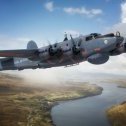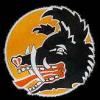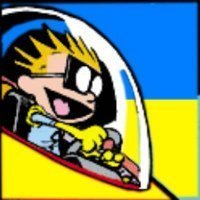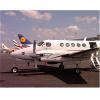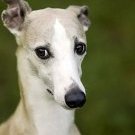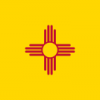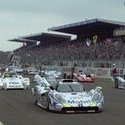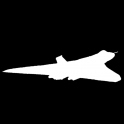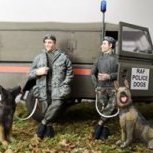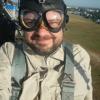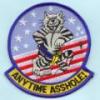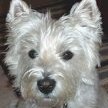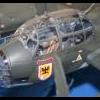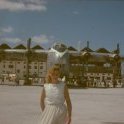Leaderboard
Popular Content
Showing content with the highest reputation on 11/06/20 in all areas
-
I've shown you my dirty Viggen but I can do grey and clean to as the first cruise Tomcats were They were tragically spotless! I had a perfectly good reason for not making a WIP thread on this, it was namely started at our annual plastic camp for middle aged...well, men. It was held in the last weekend of May and it was fun fun fun A link to the event....it´s all in Swedish but the pics speaks more than a thousand words! http://ipmsgoteborg.clubdiscussion.net/t5046-plastkollo-6-hjalmared-2017-05-26-28 Anyhew, I started this build there... I´t the famous Tamyia Tomcat in 1/48th scale and I wanted it in early VF-1 livré. That meant some converting, hacking and slashing I´put in the steels beach early Tomcat resin, a boat tail, gun grill and IRST chin pod. Well me being me I put in more resin: Aires burner cans and bang seats followed by Eduard rear mirriors and wheels, Master alfa probes and Fighter Town decals. It all went together surprisingly well and the decals worked reasonably too even if they were meant for the Hasegawa kitty. The Tamyia kit is simply lovely to build...everything just fits! it´s more like assembly than building actually but I managed to find spots to putty The buNo 158982 I decided to build was one of the first to be lost to compressor stall that was plaguing the TF-30 engines, it was lost in January 1975 in the South China Sea outside the Philipines, both pilot and RIO ejected safely. Cheers!38 points
-
Hi all this is my Tamiya 1/48 Spitfire, the first model I have done in roughly 20 years, since I was about 12 years old and my first try at airbrushing. I bought this kit as a practice kit before I start on a couple of 1/32 Spitfires I didn't want to mess up. I learned quite a lot whilst doing this one. The historical accuracy might not be 100% as I mainly wanted to practice how to put a model together, how to paint and weathering techniques. Lessons learned: -Do not paint small green items in the garden. Once you drop it on the grass its gone forever. Crawling around like Honey I shrunk the kids. -Microsol and Set didnt soften the decals very well and created a tent effect. Ended up tearing a couple. Bought Mr Mark Softer and found it much better. Will be stenciling some on the next model. -I need to buy a work desk to build on, stooping over a worktop with no seat made this quite difficult, standing up throughout. Any future tips welcomed.36 points
-
RA-5C Vigilante BuNo156633/NK603 of RVAH-13, USS Enterprise, Operation Linebacker II, December 1972 The last of the Vigilantes to be lost in the Vietnam war. It was hit by 'Atoll' missile fired by MiG-21 - unfortunately killing the navigator and pilot becoming a POW. This was in fact the only Vigilante lost in aerial combat. Kit: Trumpeter RA-5C Vigilante (#01616) Scale: 1/72 Aftermarket: Eduard Photo Etch, Master pitot tube, Print Scale decals Paints: Vallejo Model Color, Model Air & Metal Color Weathering: Flory Models Wash, Mig weathering products Mixed feelings about this kit - but it's (more or less) a Vigilante, so that's cool Built for the In The Navy GB. Build thread:29 points
-
Here’s my latest build - MRP paints used throughout, weathered with oils and black basing. Decals in the main are from Airdoc, although the kit sheets provided some minor details. Seats, Intake blanks, RBF tags and ladder were aftermarket. Sidewinder acquisition round was made up from plastic rod. SUU-23 gun pod came from one of the Hasegawa weapons sets.27 points
-
Hello everyone, Tamiya Swordfish finished with Vallejo acrylics, e-z line for the rigging. Great kit to build, the markings were made from the kit decals. All the best Gary23 points
-
F9F-2 Panther, VF-123 Kit: Hobby Boss F9F-2 Panther (#87248) Scale: 1/72 Paints: Vallejo Model Color, Model Air & Metal Color Weathering: Flory Models Wash Good quality kit from Hobby Boss, really enjoyable build.22 points
-
Hello Here are three 1/72 Viggen I have just finished. First the AJ-37 from Special Hobby in that particular Swedish camouflage in the 1980s Next the SK-37 trainer either from Special Hobby and in overall natural metal finish. Last the JA-37 JaktViggen in the late overall grey dress but with high visibility numbers. This one is from the Tarangus box, but same manufacturer. Finally the three of them which will be published in Tamiya Model Magazine French edition . Patrick18 points
-
Trumpeter Spiteful in 1/48. I liked it, the cockpit was a bit strange, the seat looked more like 1/72 scale, but I replaced it with another from the spares box, as it is you cant see much through the canopy anyway. I pre shaded this but all evidence disappeared beneath the top coats, Im using Vallejo air paints with no thinners, should I be thinning down and if so what sort of ratio should I use ?17 points
-
Tamiya's gorgeous Beaufighter TF.X built OOB except for some wine bottle foil to give the seat belt decals some body and some kabuki tape painted red for the cannon trough covers. This was a very enjoyable build and my first attempt at the hairspray method of chipping paint. Since my reference photos of this particular aircraft showed it pretty dirty I made her look a little war-weary. The Mossie certainly has her beat in looks and performance, but there is just something about the Beau that I've always loved since I built an Airfix or Matchbox one when I was about 9 I think.17 points
-
I built this a while ago, but never got around to photographing the finished kit, so here is it. It's the old Fujimi 1/72 scale A-6A Intruder. It was built straight from the box using the kits original decals. It went together really nicely with very little filler needed. Back in the 80's Fujimi were my favourite kits. I used Vallejo Model Air paints. Hope you like the pictures. And for those that are interested here's the link to the build -16 points
-
I mentioned this model in another post and I didn't want to thread-jack an interesting build so I thought I'd post it here. It's from a group build I did a couple years ago using the old 80's Italeri kit which I lengthened and modified. The original kit had two very small weapons bays, I wanted to give a it a more realistic internal payload which is why I lengthened it. My second goal was to make it look more "stealthy", as these kits were made before stealth aircraft where known to the public.15 points
-
Immediately after the end of hostilities in Europe, the allied powers scoured Germany for the remnants of their advanced technology. The American's set up 'Project LUSTY, which stood for LUftwaffe Secert TechnologY. Col Harold E Watson, a qualified test pilot was selected to head the mission. He picked a number of pilots, all combat veteran's and all Thunderbolt pilots, experienced ground crew, both American and German along with several experienced German pilots. He also carried a signed pass by Dwight D Eisenhower, stating that no senior officer or military police could impede him in his work. Two teams formed, one went after the piston engine aircraft, the other, jets. It was the jet pilots who were named the 'Watson's Wizzers' and adopted the squadron embalm of Donald Duck flying around the Earth on a Juno 004 engine. Me 262A-1a/U3 'White 30' was captured at Lechfeld. It was named Marge by the 54th ADS, and then Lady Jess IV while with the Wizzers with the aircraft being the mount of Captain Kenneth Dahlstrom. Declared surplus, it was transferred to the US Navy and designated 121443. State side, the aircraft was turned over to the Tactical Test Division at NAS Patuxent River where she was made airworthy and attempted to be flown on November 7th 1945. Failing to become airborne, it crashed into trees at the end of the runway and was subsequently written off. Because of this accident, no further attempts to fly Me 262's was made by the TTD. This is the 1/48 Dragon kit, which is the reboxing of the 1990's Trimaster kit, but this did not include any photo etch parts. The molds are still holding up well although there was some cleaning up of the lower wing required. These kits are well detailed but do require some work with the engine nacelles being a well known tricky part of this model. Test fit everything before committing glue and you shouldn't have too many problems. Decals come from Cutting Edge's Crossdressing Stormbirds and the seatbelts from Lions Roar.15 points
-
This is my Fujimi 1/72 F-86F, finished as an aircraft of the Japanese Air Self Defence Force 6th Hikotai at Tsuiki. It was one of the last North American-built F-86Fs and one of the last that Japan received before moving to Mitsubishi-built Sabres. With USAF s/n 55-3872 it was delivered in 1956 and became JASDF s/n 62-7469. It was struck off charge in November 1981 and one of many Japanese F-86Fs which passed to the US Navy under the terms of their original supply to Japan (the aircraft could either be scrapped, returned to the US Government or purchased outright). It was shipped by sea to the USA by the end of 1983 and converted to a QF-86F target drone. Its first flight in this guise was from Kern County Airport in California on 16 January 1985 and it then served mainly with the Pacific Missile Test Centre at Pt Mugu until lost (presumably shot down) in April 1987. I was given the data plate from this aircraft many years ago and wanted to do a model to represent it. So here it is, mainly OOB but with scratch-built seat and a few other bits. The 'square' speed brake wells were also corrected. I have an F-86D data plate waiting for a similar model, once I decide on which of the many schemes it wore. One bit that I needed to add, often missed, was the lower TACAN aerial, in addition to the one on the intake lip: WIP here: https://www.britmodeller.com/forums/index.php?/topic/235074766-oob-ish-fujimi-f-86f/15 points
-
Hi, everybody! It's my next model. Just riveting and niches of chassis from Aires added.15 points
-
Hi There. One of the reasons I got back into modelling was to build some or all of the aircraft that I was lucky enough to fly in during my time in the Air Cadets. So, here is my first flight and one of the planes that I learned to fly in. WP860 from RAF Turnhouse. We flew from there during a summer camp but my first time was from Lossie when they came up on a gorgeous sunny Sunday afternoon. This was a nice little kit and any errors and omissions are my fault entirely. My canopy masking wasn't the best I have done but i'm chuffed to bits with the finished kit and this one is personal and means quite a bit to me. Painted with, Mr. Finishing Surfacer White, Humbrol Arrow Red, Colourcoats Light Aircraft Grey and finished with Windsor & Newton Galeria Satin Varnish As always thanks for looking and any and all criticism and comments are welcome. Cheers, Alistair14 points
-
Hi all, Here is a model that I finished about 20 years ago. It is the P-40 N from Mauve at 1/48. It did not please me much anymore because I found it sad on its base so I decided to redo this base. At the same time I made some additions of antennas on the model. I also redid the exhaust traces and I then ironed a layer of matt varnish because I found it too shiny. I replaced the original figurine with 2 new ones. The pilot comes from a FALLER box and the mechanic from an ICM box. They are painted with an airbrush for the primer and the base coat of uniforms and faces. The details and juices were done with a brush. It is a P-40 N-5 CU from the 49th FG. 7th FS. piloted by 1st Lt. Jack A. FENIMORE and based in Hollandia (New Guinea) in 1944. The only addition to the kit is the cockpit from True Detail. The paint used is Gunze - Olive Drab and Neutral Gray. This is what it gives in the end. The 1st photo is of the model before transformation. The revamped model. Hope that you like it JiP14 points
-
The story starts at the Peterborough model show with this one. Ah, what memories, those were the days when we had real model shows to visit! I'm sure those times will return! I was rummaging through a box of old Matchbox kits & was spotted by a venerable member of the Mirage SIG handling the Mirage IIIB. The decision was made there & then, especially when the Mirage SIG leader is there next to me! So a random peice of artwork was chosen from his French Air Force bible full of profiles, "i'll build that one!" This is a Matchbox kit in 1/72. Rescibed a few but not all panel lines, some existing panel lines were OK. No cockpit present, so boxed up something with side consoles. The underside rear fairing was non existent so I used one of the kit options from the Heller kit & added an arrestor hook. The Heller kit thankfully has plenty of options which allowed me to build both this & the 5BA. Also thanks to Special Hobby for providing multiple options in their F1 kit. For the instrument displays employed artistic licence & scavenged some consoles from Special Hobby Mirage F1 kits along with the Mk.IV ejection seats. The tanks were from the Heller kit I used for the Belgian black anniversary 5BA kit. I think they're strengthening rods that appear under the cockpit, I added them with brass tube. As a couple of pitot tubes extend from the both of them I flattened the tubing & added wire to them to represent the pitot's. Also added blade aerials from plastic sheet & some old left over PE aerials from old kits. I added some extra scrap plastic to the undercarriage legs to represent a bit more detail & some extra details to the undercarriage bay doors. Paints; Ammo Mig - upper colours & Vallejo Metal Colour Aluminium undersides. All the decals were taken from the Model Art sheet 72-067 & used some color reference photos from the Osprey Aerospace book "Mirage! Dassault's Mach 2 Warriors". Squadron marking references I worked from, were EC 1/13 at Colmar under the assumption that the roundels & upper wing markings would be similar, & the decal sheet had everything I needed. Looking at the photos in the book, the paint on the fuel tanks had peeled off great deal & there was a fair bit of weathering. Really look forward to a new tool 1/72 Mirage IIIB which I believe is on the way, so I can use the rest of the decals from the sheet. Markings are for Dassault Mirage IIIB No.217 2-FT EC 02/02 at Côte-d'Or Dijon-Longvic Air Force Base 1983 So some of the older Matchbox kits are worth a go, especially if they are the only option. In hindsight I could have found a correct length & shaped nose cone from somewhere as the kit profile does look a little too short. A note of warning to anyone planning to build this kit, the jet intakes are way too thick & don't taper in at the front, so they had to be sanded & shaped so that the intake lips are nice & thin. Thanks for looking & have fun with the older kits! Martin13 points
-
Thanks Bill I thought you were going to say that so the files came out… Only took a couple of minutes to find them in the new tool stand! I'll get used to it. I couldn't really see how well I was doing so I used Giorgio's dry-wipe marker method. Thanks @giemme for that tip - it really makes levelling the join much easier and more precise. For those not familiar with this technique, you use a dry-wipe marker over the joins like this: …so that when you file/sand you can see the high spots: …and keep going until they're all gone: Thanks John, great information, as usual As you can see above, the bump has now gone - thanks. Thanks Mark That would have been my method before perdu (and others) got my head around the difference between filling a gap and removing a bump. Filler in this case would have messed up the line of the fuselage. Wings are now on. The Aqua Gloss didn't work on the naughty mask so it's been replaced: Showing that the tailplanes are wobbly. I'll sort those later.13 points
-
Black bottoms follow...look away if you must! It was indeed too big and has been corrected. Unfortunately I didn't note by how much in my earlier post! That's it Heather, and as mentioned above, like an idiot, I didn't note how much I had to shorten it by. Plonker! As mentioned in my last post. I was going to finish the prop detailing. I started by drilling the hub and adding a piece of .5mm brass rod which was then filed back. I was going to add the counter weights by sticking punched out circles of plastic sheet to PE. That was a silly idea as there is no way I can get them to look in scale. So the PE was done away with and I simply glued the 1.2mm discs of sheet to the hub. After a coat of black I'm pretty pleased with how it looks (I did take a pic, but for some strange reason it won't upload!) I now try to check after every pic whether the pic I took is in the memory, and still sometimes they disappear! Needless to say I also sprayed the rest of the underside using Misterkit RAF Night. I'm pretty pleased with the way it looks at the moment, enough variation with the airbrush passes to stop it being bland. Pics were also taken of the other bits and pieces but they too have been eaten. The "other bits" included bomb bay doors. radiator door, and wheel hubs. Thanks for looking in, and stay safe! Ian12 points
-
Another 'wif' assembled in the middle of other builds. I was inspired by an artist's picture of a lend-lease Spitfire which I mistakenly thought had a top coat of white and Russian green (black paint on top of green paint). Halfway through the top coat, I sort of changed my mind and tried to darken the grey. The decals were gifted to me by a fellow builder here Reini78 - thank you once again!11 points
-
My four lockdown builds: a Revell 1/144 A380, a 1/72 Hasegawa B-17G in 15th AF codes, an Italeri Stirling Mk 1 and an Airfix Lancaster Mk I. From this angle, using no photographic skills, they look their best. Michael11 points
-
Thanks everybody! Here's a link to the instructions for using Model Master Metalizer with a brush - it works. http://www.essmc.org.au/Natural_Metal_Finish.html Unfortunately, I don't think it's easy to get a hold of in the UK, and I don't know how long it will continue to be available in the states either. Here's a Spitfire XIX where I used the technique for the entire airframe. I've got a ways to go before I can be mentioned in the same sentence as Navy Bird! You know me too well Ced! Water based acrylics don't require any hairspray to chip over metalizer. All glossed up for transfers. RNZAF roundels from the Xtradecals sheet. The rest from the EagleCals sheet. They're settling down nicely with Microset and Microsol. They'll definitely need a little weathering after a matt coat in order to match the top coat.11 points
-
After reading so many good comments about this kit I thought I have to try one myself. And, I wasn't disappointed either. It's a super model with finely recessed and engraved panel lines and details. Some of the parts are really exquisite to say the least. I chose one of the 'Expert Kit' versions and these include a fret of photo etch and extra markings. I must admit I didn't use some of the PE as they were just too fiddly. You even get landing lights to put behind the clear parts and some tiny Sutton harness seatbelts and instrument panel. A plastic one is also provided. Oh, and a set of canopy and wheel masks too. Two rear canopies are provided too, one for the closed position and one slightly wide for the pushed back open position. If I had to have a little whinge it would be I thought the canopy parts were a little on the thick side and I'm sure (for the version I did anyway), the squadron codes should be Sky and not pale grey? They do actually show them as Sky on the colour drawings but the decals aren't. Anyway, roll on the Wildcat. Thanks for looking. 20200609_201701 20200609_201737 20200609_201823 20200609_20201310 points
-
Thanks Ben! Steady now....there's plenty of time for some idiot to f*** this up! I'm already cream crackered. It's the bloody phone's phault! Why, thank you Sir! Unfortunately there is no way I will ever dance like she did! Cheers Ced! Thanks Terry! I must admit I have trouble believing it myself sometimes, then I get a wake up call and realise it's still fighting me! Right then, Here's the pic that refused to upload yesterday. Prop completed. Or so I thought. Fortunately after the comments about the prop diameter I decided to double check. Crap. I did correct it, but instead of amending the radius to 26.5mm I had corrected the prop blade length to that. Which meant it was still 2mm too long on each blade! Of course I had a little think then chopped the ends off! It is now correct! Then came more black! The tail needed a little more, as did the edges around the underside of the nose and the wheel wells. Oh, and the now shortened prop! So here is how she looks now, complete with black bottom, plus the extras that refused to be photographed yesterday. Of course it didn't go perfectly. Once again the masking tape pulled off the paint over the landing lights. Fortunately only on the brown side! and this is totally inexplicable. How did I allow this to happen? ] It really wouldn't have been any more effort to have allowed the green to extend all the way down. Now I will have to respray the green to eliminate the brown line at the junction with the black. Careless. Anyway, all in all a very productive day! Thanks for looking in, and stay safe! Ian10 points
-
I acquired a bumper pack of Lego last year, ostensibly to use just for making support jigs and stuff. I was transported back to being eight years old again. When I get fed up with life, I can pile into the bricks and be creative again, just having fun. A coat of acrylic Hu29 showed little of concern, save the wing roots. They’ve been dealt with by scrapers and files, and now look reasonable. You’ll note weapons and landing lights have gone in. The former are nickel-silver wire which was the right diameter for the job. The latter were fun, because the opening they fit into is open into the wing cavity. You can imagine the rest... You can see my brushed undercoat is a bit patchy in places, but a second or third coat deals with that if required. The paint brushes on nicely from the pot, though I tend to thin it with a drop of tap water in a palette. For about 24 hours, the paint is dry but liable to accidental scratch damage. After about a day, it becomes pretty resilient. Still, it’s good enough as a base and key coat for brushing enamels over. The weather here in the bottom right-hand corner of Blighty is dull and damp, and my general mood is following it. I think a day of emails and paperwork will be safest.10 points
-
The first coat of primer revealing as usual that a bit more wok is needed:10 points
-
Hello my friends! I want to show you my old project that I completed in October 2011. This is Jaguar E type Le Mans 1962 Heller. I didn’t have as much modeling experience as now, so please do not judge strictly. I still have step-by-step photos of the process. If it is interesting, I can create a separate VIP theme for assembling it. And about the sad one, the Heller company reissued the model several years ago and posted photos of my model on the box without my permission, they just downloaded them from the American forum where I spread it. Enjoy watching!9 points
-
A few weeks ago I finished this build. I painted this entirely by brush other than primer, which I don't usually do but I felt like trying something else for a change. It's not my best work but it's good enough. I forgot to post it up on here as I've been mainly putting my models in Instagram lately, but here it is: WIP thread above9 points
-
1/72 nd Matchbox Hadley Page Heyford. Build like I did when I was 15. 45 years ago.9 points
-
This model ticked off a number of firsts for me in model building....first 'civilian' vehicle, first 1/24 scale, first salt and hairspray weathering, so was really an ongoing experiment all the way through. The bus is the excellent Revell 1/24 Samba bus. The side doors, load bay and engine cover all open but the front door hinges were so fragile that I glued them shut. The figures are Masterbox and the wall is made from an old piece of laminate flooring painted to look like a concrete wall, with AK graffiti transfers. Paint was Vallejo, Tamiya and some oils for weathering. All comments and constructive criticism welcome9 points
-
Quick print update then. Exhaust tunnels and fusealge cross-section came out well: Again, these being shown here in the raw i.e no sanding to surfaces bar the edges where supports were attached. In the top shot of the pair you can see some *slight* laddering in the base of the belly - due (I think) to the angle of that surface in relation to the vertical axis of the printer. Initially this was some concern until I realized that region will be modified soon in order to create the bulge of the airbrake and thus present a more 'generous' curvature; this should respond to the print angle more amicably. Wall thicknesses on these parts vary from 0.9mm down to about 0.35. Main reason for today's print though was to give me a calibration piece* once and for all in terms of tolerances: All the vertical walls printed fine down to the 0.2mm baseline, however, at that thickness it's more like paper so work on the basis of no load-bearing where such thin-ness required. The vertical posts in front of the walls are likewise fine until you get down to 0.3mm in diameter, which is uber bendy and incomplete at the top. The 0.2mm pole didn't survive at all unsurprisingly on account of being a mere whisker. This is all good info and nothing here to cause concern for the 1/72 modeller. If you're going to need 0.2mm poles or pipes for anything then brass tube/rod or fusewire are a better bet anyway, and certainly will come into play on the engines and bays detailing later. Results in brief: down to 0.2mm for walls/skins etc. down to 0.4 for cylinders etc. (unless forming surface detail of larger structure). What did rather surprise me was the legibility of the numbers I'd added to the design to display the scale of each cross-section: The numerals are only 1mm high and about 0.2mm deeep but still readable. Nowt glamorous here but some good groundwork laid for future printing decisions and considerable reassurrance regrading wall thicknesses. Hope you've all had/are having a decent Wednesday. Tony *this calibration idea was nicked from one of the many jewellers using the Elegoo printer so my thanks and apologies in equal measure to you for not remembering which Youtube clip this notion was taken from.9 points
-
My first AFV in this scale is this Humber Mk.II from Matchbox in 1/76. Built mainly OOB with a few added details: Pistol ports added to turret sides. Replaced the kits lifting and towing points with scratch options. PE sand channels by Hauler added. A couple of accessories from Milicast added. Scratch towing cable replaced the kit example. Painted with AK and Vallejo paints, weathered with oil wash and dusted with pastels. Mounted on a simple desert base with a couple of repainted cheap palm trees. WIP here: Thanks for looking. Stuart8 points
-
I see that it's only eight days since I posted my last RFI. Damn this furlough! This one started when I was cleaning up the garage and found an old Butane lighter. I immediately thought, hover bike. So here we are.... I made up a small diorama to put things into perspective. The main body is the old lighter, that's a Christmas tree bauble as an anti grav generator and Yamaha forks at the front. The panniers are the fuel tanks (there's a gauge on this one) and there are airbrakes on them too for steering. The rear spoiler is ex Porsche 911. Front winglets are ex Lysander. The figures are from Tamiya pit crew sets. The sunglasses on the rider took ages to do as they were so fiddly. His dispatch case is off a large Harley model. For the camo I daubed two shades of green onto the white primer and then used Humbrol Maskol to roughly cover them. A couple of coats of home made sand yellow later and as I started to remove the Maskol it took the yellow with it down to the primer in places. As this would have been built from lightweight materials and not steel, there is none of the usual kreiger rust. So the peeled paint cancels out the lack of oxidation. These were front forks on a Yamaha. That manifold in the centre channels bled off engine thrust up them and out of the front to help to slow this thing down, along with the airbrakes. The headlights are ex 1/76th Panzer, wing mirror from the spares box and by the manifold the odd shaped block contains the drivers instrument screen. The strap on the drivers dispatch case is copper wire. I used large pliers to 'texture' it. The camo sheet is tissue wrapped around scrap wood. Fuel filler caps are home made. On the RH side. Not sure what the bulge in front of the pannier is for, or the pipes under it. But it felt right just there. The footrest (on both sides) is mounted on an engine access panel. The rider was wearing a baseball cap. the helmet is Milliput. There is a green pistol holster and a small intake on this side. The anti grav ball is the same size as that on a Falke. That uses P-38 turbo superchargers to exhaust the gases. Here I've used a Yamaha (or Harley, I can't remember) drive shaft set up instead. The back end with the jet nozzle. It's probably ex space ship but I'm not sure what. A close up of the RH side shows up the holster. It's just laminated plastic card. Markings are from the decal spares box, weathering is all my own work. Many thanks for looking. I always welcome your comments. I enjoyed the build and look forward to the next, (probably another kreiger, sigh). If you missed it, the build is in the Sci fi WIP section. Cheers, Pete8 points
-
Hello! Here is another my model! I made RF-4C from RF-4E. I just changed the wheels, exhaust nozzles and antennas. As additional sets I used Eduards photo etched, pilot tube from Master, exhaust nozzles and ejection seats from Aires, wheels and FOD from Reskit. I painted the model with Hataka paint. Weatering- oil dots, washes and pigments.8 points
-
Hello all, Here is my recently completed 1/48 Kinetic Su-33 Flanker D of the 279th Fighter Aviation Regiment, Russian Naval Aviation, on board the Admiral Kuznetsov circa 2016. The kit itself is very nicely detailed, but be warned the instructions are dreadful! Extras used included a Quickboost seat, New Ware masks, J's Work camouflage mask and Master Pitot tube. Paints are from Mr Paint (MRP-199 Su-33 Light Blue, MRP-200 Su-33 Dark Blue and MRP-201 Su-33 Grey) and weathering was done with a mixture of oils and pigments. The build thread is here Beside my Ukrainian Su-27 I built last year: Thanks for looking. Dave8 points
-
A great example of recycling. Approx. 200 obsolete Crusader tanks were re-purposed as prime movers for the 17 pounder AT gun. Many more were intended to be built, but the mounting of the 17 pdr and "77mm" gun in self-propelled mountings made them unnecessary. It's a typical Milicast kit with lots of detail, almost to the point that I think they sometimes overreach themselves as some detail is "mushy" and there is a lot of flash and many pin holes and voids to fill. Close up photography make these pretty obvious. I had to replace the kit's headlights and guards as they were full of flash and bubbles. However, it builds up into a nice replica all the same. All the stowage came in the kit, which went a long way to concealing many of those pin holes. It's posed with a Matchbox 17pdr in the last photo to show it in its "natural environment".8 points
-
It's finished - but I'm not happy with it..... It was a struggle all the way through - but I finally beat it into submission..... Sukhoi Su-17 Type R :- https://en.wikipedia.org/wiki/Sukhoi_Su-17_(1949) The whole front fuselage section could be detached in emergencies to act as an escape capsule..... As well as the undercarriage being ill-fitting and rather weak, the final indignity is that it's a tail sitter !! - so I had to make a prop from clear rod.... It is a welcome addition to my collection of Soviet/Russian types, so thanks A&A Models.... But it was hard work - and it 'Stole my Joy' in the end.... Ken8 points
-
Warm... Warmer... Hot,...Red Hot!!!! 'This I think is as close as I will ever find to a photograph of Xantho' I said in my last substantive post on this subject... Let's see if that statement has stood the test of time. Last week my employer asked for a small number of volunteers to resume working in our offices in central Perth. I was one of them; chiefly because I wanted to see if the bookshops in town had re-opened. And so, last Monday-week at about 11.00 AM, I returned, after a seven week break, to my favourite bookshop. And here I found to my great surprise that not only had they had somehow stayed open throughout the great COVID 19 'lockdown' but had significantly increased their stock. In the maritime section was this brand new tome on the Ship Models at Glasgow Museums. Glasgow! Home of Denny Brothers Shipbuilders - the people who built Xantho. Glasgow! Home of Robert Stewart - the metal merchant who reconfigured the ship! What wonders would await within? Dare I hope? I opened it and started to search... The models are broadly speaking arranged in chronological order and / or increasing technology. Naturally there are plenty of sailing ships in the first half of the book. I liked the clipper bows on these examples, but they weren't steamers, I was at best luke-warm. Ah! this caught my eye - this is 'Loch Lomond' - the first ever steam-ship built by Denny Brothers. This very model had been cited in my initial discussion with Mac McCarthy. I was getting a bit warmer. Then this one - 'Lady Torfida' an auxiliary steam engine luxury yacht. She has three masts and is much larger than Xantho but has a clipper bow and a single screw. Her funnel is set to the rear of amidships, but not as far back as Xantho’s. Built in the 1890s some of her fittings are probably too modern; but still.... not bad. Getting warm, but I may have over-shot by a decade or three. 'Menai' 1840. Probably about the right size and possibly a fair approximation of Xantho when she was a paddle-steamer. This is a pleasure yacht and not a ferry but I think I'm getting very warm now. I like the fact that the photo is slightly elevated and shows the deck fittings. Please bear that in mind when photographing ships and ship model; if at all possible try to get at least one or two shots from an elevated position. Now we're very warm. 'Erin' another pleasure yacht. I had no idea these things were so common in the 19th century! A couple of decades too late and with funnel amidships. The ship is supposedly much heavier than Xantho at 994 tonnes but frankly - I'm wondering if that's a typo. I think that the hull shape is about right, she has the correct bow and number of masts! Hot! 'Cressida' Yet another yacht! Correct period, bow shape, number of masts, rig and roughly the correct size. Just about perfect except that the funnel is mounted amidships. I suspect that the hull on Xantho was more flat-bottomed than this - but this is really very close to what I have in mind. It's also a very beautiful vessel. 😘 And now we get to it... White Hot!!!! The yacht 'Britannia' (No not QE2's Britannia - this one!) Correct period; only about 10 years after the Xantho refit. About the right size - slightly lighter at just 64 tonnes. Two masts and correct rig (schooner). Correct shape to the bow. Single screw steamship with the funnel mounted to the rear of amidships. Elliptical counter stern. It's just about perfect! It's also a very attractive vessel - I much prefer to make models of subjects that I like the look of! This is a builder's model so it is a primary reference. This in many regards is better than a period photograph and I'm going to use this as an important guide when it comes to compiling drawings for the model. This beats the photograph of William Miskin! My main trepidation about ‘Britannia’ is that she is a pleasure yacht, so I'm expecting that Xantho will have different deck fittings (we know it had a cargo hold for example) and a more robust hull. As mentioned before, since Xantho was originally a paddle steamer I'm picking she had a flat bottom and a squarish cross-section through the hull. But that's not a problem as I have the form lines from 'Premiere' to help me with that. For now I'm very happy with this image and believe that finding this is a major step forward. Now all I need to do is draw up another set of plans and get them reviewed by a recognised expert in shipping of that period - and it so happens that I think I've found just the guy... 🤔 Till next time, Bandsaw Steve.8 points
-
Sukhoi SU-7 1/48 OEZ - Restoring old model, built at the end of past century, as India AF Thunderbirds display team, survived few movings and shelf fallouts, now restored and completed as " Chosŏn inmin'gun hangkong mit banhangkonggun" - The Korean People's Army Air and Anti-Air Force Su-7s (Su-7BMK) based at Sunchon . 20+ were delivered from SSSR in late 1970's. Kit parts before rebuild started. Only five photos/movie screenshots found, And quick restoring build results,8 points
-
As promised, I have begun work on the fuselage. I have marked out where I want bulkheads to go on the model and begun to cut and fit them. This procedure is no different to what we would do on an injection moulded kit. I cut one half to fit one side of the fuselage to fit, and glue it in place. Once dry, I mark the halfway point on the bulkhead and draw the other side on the plastic card slightly oversize. I then just whittle away until a near perfect fit is achieved. I tend to eyeball the shapes of my bulkheads, been at this game too long I guess but you may want to use a profile gauge instead. The most important thing here though is to get the best fit you possibly can. It adds to the strength of the model and prevents flexing of the fuselage. Even now with only the cockpit area done, there has been a significant strengthening of the fuselage. Wings that require ribs and spars are treated in exactly the same manner. I have also got the tops of the main planes fitted with their ribs and riblets and another twenty four hours to cure should see these ready for sanding down. Thanks for looking Martian 👽8 points
-
Masks are made for the orange areas in G-AANL. For that I had to scan, resize and print the side view, since it is not to scale in the instructions. Question: what are modelers supposed to do to paint the model as indicated? Answer: They will need a mask. Q: Is it provided with the kit? A: No, it isn't Q: Is there a properly scaled pattern or side view (i.e. the same size of the model's fuselage) somewhere in the instructions? A: Nope Q: ???????? Masks applied, sorting the struts and relief detail: Aluminium is airbrushed on the lower wing, whilst a gloss white base is needed on the other surfaces before the aluminium is applied: The flying surfaces of G-AAUR are also sprayed white in preparation for the light orange:8 points
-
Hi guys, I will be building the Matchbox 1/72 F4U-4 Corsair. It is a easy kit to do from my Matchbox stash. I will also place this one in the F4U Corsair GB. Here are some pictures of the box art and content. And I have made a start right away by glueing the first four parts to each other. I already painted the inside green and the engine black, so I can later drybrush it. That is it for now. Cheers,7 points
-
This has been the most challenging and time consuming build yet. It was my first time working with schurzen and I wasn't too fond of it. I had many difficulties with this build and learned a lot while making it. I enjoyed the process but will be choosing something less fiddly for my next build, maybe an early Panther or something. I was planning on spraying some buff over the finished model to dull the decals down but only remembered after the pictures had already been taken. As always, all criticism and comment welcomed. Anyway here is the end result: Andy7 points
-
Stormovik, Shturmovik or Sturmovik? Ive come across three different spellings on the www. Stalin, In a telegram to the directors of one of the troubled Sturmovik Il-2 plants ‘Our Red Army now needs Il-2 aircraft like the air it breathes, like the bread it eats.’ Over the course of the war, a total of between 31,000 and about 36,000 Il-2s were produced. The Il-2 was anything but advanced in its mixed wood-and-metal construction, which was relatively easy to manufacture in significant numbers using relatively unskilled workers. But for an aircraft, it was an amazing achievement. Among the Shturmovik’s most important assets were its strength and robustness in combat. The forward fuselage section — protecting the aircraft’s fuel system, radiators and crew station — was built entirely of armor plate. Thus, the Il-2 could, and often did, absorb extraordinary battle damage and survive to fight another day. The Build, Airfix series 2 kits. Having recently completed four of the latest Airfix had to offer in the 1/72 spitfire range I thought I would dig around in my stash and find my next challenge. So out came two Airfix Illyushin Stormovich (Series 2) kits. Finished as a post war Polish Air Force Aircraft. Poor fit between fuselage half’s and wing upper and lower sections required plenty of filling and scrapping, when attaching the wings to the fuselage the wings were too thin I could either align the tops or the bottoms with the fuselage join line and do my best on the opposite side, I went with aligning the top surfaces best I could and profiled the underside best I could, Undercarriage doors are simple profiled pieces with little detail or instructions how to locate. I struggled throughout the build and on more than one occasion I thought of stopping and putting them to one side, however as I progressed things looked better and in the end I’m pleased with the results. (but I wont build another!) Airfix box 'Stormovik'?7 points
-
Hi mates, I finished this one a few days ago, one of my favourite planes. This model from Special Hobby is very nice detailed, with almost a very good fitting, and came with nice PE from Eduard. I added some scratch and wires and some rivets with my Trumpeter's riveting wheel. I enjoyed it a lot and I hope you like it... Cheers Ricardo7 points
-
7 points
-
Hi, again! Not much of an update this time, as I've spent the last three weeks since my last update cleaning up a few things and doing some planning on the next steps for this build. I've fixed a couple of joints on the deck lockers that were included in my last update and primed them in preparation for final paint. You'll note I've included two engine room vents in the above photo, as well. One of these vents is located on each side of turbine intake structure. I built the vents from various thicknesses of plastic card. I'll be adding screens to the vent openings, using a discarded coffee maker metal filter screen. A mock-up showing the screen assembled in one of the vents is shown in the following photo. Next, I made my first attempt at making the deck railing stanchions (aka seagulls - https://www.britmodeller.com/forums/index.php?/topic/235064445-dunkirk-tribute-completed/&do=findComment&comment=3683996). My original plan was to use the stanchions from my Perkasa model. Even though I tried to be careful, I broke a number of the stanchions when removing them from Perkasa's deck. So, I forged ahead with a Plan B. This involved cutting the top ends off each of Perkasa's stanchions & gluing a length of white .75mm plastic rod to the stanchion ends salvaged from the Perkasa model, using CA glue. During this exercise I realized that Brave Borderer's stanchions at the stern were different in size & shape than Perkasa's. I ended up building these different stanchions using 75mm & 1.6mm plastic rod. This resulted in a total of 5 different shapes & sizes of stanchions. The following photo shows the end result (I still need to cut the stanchions to length, but this will wait until after the stanchions are painted). Thanks for looking in. Stay safe! John7 points
-
But wait, there is more! 😆 For the same price!: Five models completed and waiting for things stuck in the mail for the last touches: Six more models in progress as open threads here at BM: Two DH60s, Macchi M.39, Sikorsky S.51, two Dragon Rapide on floats, And of course this one, the Norseman. So, juggling 12 models and, on top of that having to restrain @Martian, @72modeler, @general melchett, and so many others, this is a FULL TIME JOB!7 points
-
OK the first groove treatment is in and the Bi-carb applied as per Martian's instructions. Blimey bi-carb grabs the supergloo like mad doesn't it? Phew I will give it a gentle sanding after dessert... This is the "After the Berna clamping onTamiya Thin Green Cap" result Before the Tamiya hit it the crack was about 3/64" open, scared me I don't mind saying. And now the bi-carb takes its toll Blimey the superglue grabs like lightning, I had best get on with it although I have been having a therapeutic afternoon today. Trying to colourise the Stencil images that will end up as decals later. More to do before I knock off to watch netflix...6 points
This leaderboard is set to London/GMT+01:00






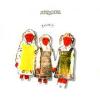
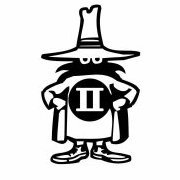
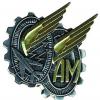
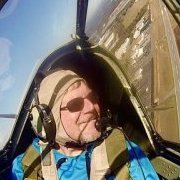
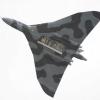

.thumb.jpg.cfc129272ffec824439b15e6013d5952.jpg)

